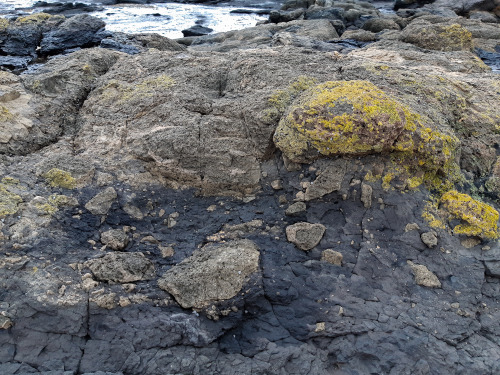Every rock that crops out of the ground is a record of the past, and so, in one way or the other it
Every rock that crops out of the ground is a record of the past, and so, in one way or the other it tells something about the environment in which it was formed. For example, the dark grey rock with fine and smooth texture you can see on the photo, looks that way because it formed on deep water sea bottom, where waves did not disturb the sediment that make up this rock, nor coarser sandy material was brought into it. This was a clam environment which allowed the sea-bottom animals to feed on the organic matter within the sediment (hence the dark colour) and is the reason why there are so many fossils in it, which I showed in the ‘underwater lilies’ post. So, it is all good, and all makes sense!But, then there are those large pieces of light grey rock (not shown, but some bigger than sedan car) with rough texture and little holes. Like you can see, its pieces are larger than anything else in a vicinity and are scattered all throughout the dark grey rock. This light grey rock does not belong to the sedimentary environment it is in, it got to where it is by other means than the sediment that surrounds it. And so, the plot thickens… South coast NSW, Australia -- source link
Tumblr Blog : drrockclub.tumblr.com
#geology#environment#sedimentary#sedimentology#petrology#petrogenesis#siltstone#fossils#earth science#science#biology#chemistry#organic#natural history#nature#ancient#history#original photography#australia#knowledge#drrock

